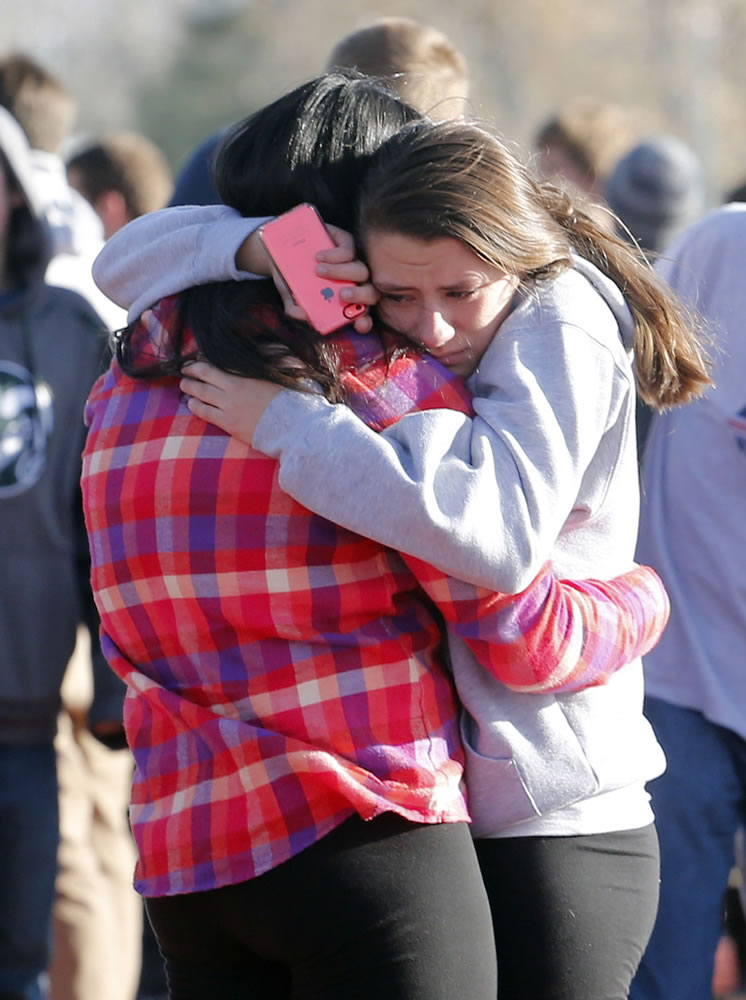WASHINGTON — There’s been no real reduction in the number of U.S. school shootings despite increased security put in place after the rampage at Connecticut’s Sandy Hook Elementary School in December 2012.
In Pennsylvania and New Mexico, Colorado and Tennessee, and elsewhere, gunfire has echoed through school hallways, and killed students or their teachers in some cases. “Lockdown” is now part of the school vocabulary.
An Associated Press analysis finds that there have been at least 11 school shootings this academic year alone, in addition to other cases of gun violence, in school parking lots and elsewhere on campus, when classes were not in session.
Last August, for example, a gun discharged in a 5-year-old’s backpack while students were waiting for the opening bell in the cafeteria at Westside Elementary School in Memphis. No one was hurt.
Experts say the rate of school shootings is statistically unchanged since the mid- to late-1990s, yet still remains troubling.
Ronald Stephens, executive director of the National School Safety Center, said there have been about 500 school-associated violent deaths in the past 20 years.
The numbers don’t include a string of recent shootings at colleges and universities. Just last week, a man was shot and critically wounded at the Palm Bay Campus of Eastern Florida State College, according to police.
Finding factors to blame, rightfully or not, is almost the easy part: bad parenting, easy access to guns, less value for the sanctity of life, violent video games, a broken mental health system.
Stopping the violence isn’t.
“I think that’s one of the major problems. There are not easy answers,” Stephens said. “A line I often use is do everything you can, knowing you can’t do everything.”
Bill Bond, who was principal at Heath High School in West Paducah in 1997 when a 14-year-old freshman fired on a prayer group, killing three female students and wounding five, sees few differences in how shootings are carried out today. The one consistency, he said, is that the shooters are males confronting hopelessness.
“You see troubled young men who are desperate and they strike out and they don’t see that they have any hope,” Bond said.
Schools generally are much safer than they were five, 10 or 15 years ago, Stephens said. While a single death is one too many, Stephens noted that perspective is important. In Chicago there were 500 homicides in 2012, about the same number in the nation’s 132,000-plus K-12 schools over two decades.
“I believe schools are much safer than they used to be but clearly they still have a good ways to go,” Stephens said.
The recent budget deal in Congress provides $140 million to support safe school environments, and is a $29 million increase, according to the office of Sen. Tom Harkin, D-Iowa, chairman of the Senate Health, Education, Labor and Pensions Committee.
About 90 percent of districts have tightened security since the Newtown shootings, estimates Randi Weingarten, the president of the American Federation of Teachers.
Many schools now have elaborate school safety plans and more metal detectors, surveillance cameras and fences. They’ve taken other steps, too, such as requiring ID badges and dress codes. Similar to fire drills, some schools practice locking down classrooms, among their responses to potential violence.
The incident involving the 5-year-old in Memphis led to the use of hand-held metal detecting wands inside elementary schools in Shelby County’s school district.
Attention also has focused on hiring school resource officers, sworn law enforcement officers who are trained to work in a school environment, said Mo Canady, executive director of the National Association of School Resource Officers. He said his organization estimates there are about 10,000 of them in the U.S.



